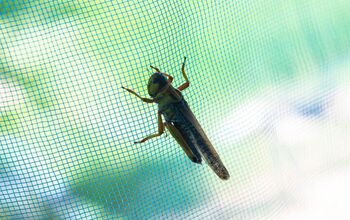Can You Put Potpourri In Candles? (Find Out Now!)

Homemade candles are popular craft projects for many homeowners. The supplies and equipment to make homemade candles are readily available at most craft stores. Scented candles are extremely popular. Many do-i-yourself candle makers wonder if you can put potpourri in homemade candles.
On the whole, it is not recommended to mix dry potpourri into your candle wax to make homemade scented candles. The ingredients in most dry potpourri are flammable and could be a potential fire hazard as the candle burns down. Some potpourri oils can be mixed with candle wax to impart a scent as the candle burns.
Potpourri offers a wide range of scents, but including the dry potpourri material into a candle is not wise. There are other safer ways to use potpourri in your home to enjoy those odors. If you are a home candle maker, you should understand the dynamics of your candles and the ingredients that you use. Safety should be a key issue when making and using candles.
What is Potpourri?
Most potpourri is a mixture of dried plant material with pleasant fragrances that linger after the plant material is dried. The list of plant materials used to mix potpourri is long and varied. Some of the most popular scents included in many potpourri’s include:
- Allspice
- Cedarwood shavings
- Cloves
- Juniper wood shavings
- Lavender leaves
- Lemon balm leaves
- Mint leaves
- Orange peel
- Pinyon Pine shavings
This is only a small sample of the possible ingredients often used in potpourri. Any plant with a pleasant odor that lingers after the leaves, stems, or wood is cut can be used in potpourri. It should be noted that some of these ingredients may be toxic if ingested so take care when mixing potpourri.
What is the Problem With Using Potpourri in Candles?
The biggest problem with putting potpourri in candles is the flammability of the dried plant material. As a candle burns, it melts the top layer of wax. This small pool of liquid wax can suspend parts of the potpourri and allow it to float closer to the flame. The candle flame can get hot enough to ignite the dried pieces of plant material.
If the dried plant material ignites in the pool of melted wax, the candle can begin to burn hotter with a larger flame. This hotter and larger flame can melt more wax and expose more of the potpourri to the flame’s heat. You can soon have a small bonfire in your candle container.
The fire in the candle can get large enough to ignite surrounding materials such as drapery, nearby decorations, or upholstery. In some instances, the heat may be great enough to shatter a ceramic or glass candle container allows the hot wax and burning potpourri to spread.
What Should I Use to Scent My Candles?
There are a host of methods and materials for scenting candles. Most of these are naturally occurring materials available at most hobby and craft stores. Many of these scents are already available in your home. Some of the more common and popular materials for scenting homemade candles include the following.
Use Commercially Available Scented Candle Wax
Suppliers of candle-making materials offer a wide variety of pre-scened candle wax. Most craft and hobby stores carry these supplies. This is an easy way to create your scented candles at home.
You can also buy liquid scents that are safe to add to your candle wax. However, you should be aware that these scented waxes or liquid scents may include ingredients you don’t want in your home. Some manufacturers of these products don’t include the ingredient list with the label on the product. Some of these products are known to contain ingredients that are considered toxic or carcinogenic.
Use Fragrance or Essential Oils to Make your Candles Smell Great
If you use fragrance oils to scent your candles, be aware that most fragrances are synthetic. In some cases, the fragrance oils are highly concentrated. Many contain the same kinds of ingredients as the commercially available candle scents. Shop carefully and only choose fragrance oils that include a complete ingredients list.
Essential oils are another favorite way to add fragrance to your homemade candles. Essential oils are made from plant materials such as herbs, flowers, and trees. Some people believe that essential oils have specific healing or soothing properties. Some of these essential oils may not be compatible with candle wax. A bit of experimentation should be expected.
Use What Nature Gives You
Nature provides a wealth of naturally occurring pleasant fragrances. Many of these are already in your home, and you only need to understand how to use them. Some of the more popular include these items.
- Herbs and Spices – If it tastes good in your recipe, it probably smells good as well. Many candlemakers utilize herbs and spices in their candles. If you want to make candles scented with rosemary, thyme, or allspice, you can use what is in your cabinet. Dried spices should be ground into a fine powder before mixing with your candle wax. Amounts vary, so experiment to find the best ratio of candlewax to scent.
- Vanilla – Very few scents create as pleasant an atmosphere as vanilla. Adding a few drops of vanilla to your candle can fill your home with this rich and soothing scent. Vanilla should be used sparingly to prevent overpowering odors. Some vanilla may not mix well with candle wax.
- Plant Materials – Favorites among candle makers are lavender, roses, and wood scents such as pine. It isn’t a good idea to add large chunks of these plant materials like you find in potpourri. However, you can grind small amounts of dried flower petals or pine needles. The consistency should be as small as possible and added sparingly to the candle wax.
Use your imagination to discover new scents that can be added to your homemade candles. Just remember the basic safety concerns. You still have the candle wax for another project if it doesn’t work.
Potpourri and Candles. Not a Good Idea
Adding potpourri in its natural state is not good when making homemade candles. There are better and more efficient ways to impart fragrance to your candles without the risks. Keep your potpourri reserved for its intended uses and places.
Related Guide

Dennis is a retired firefighter with an extensive background in construction, home improvement, and remodeling. He worked in the trades part-time while serving as an active firefighter. On his retirement, he started a remodeling and home repair business, which he ran for several years.
More by Dennis Howard



























